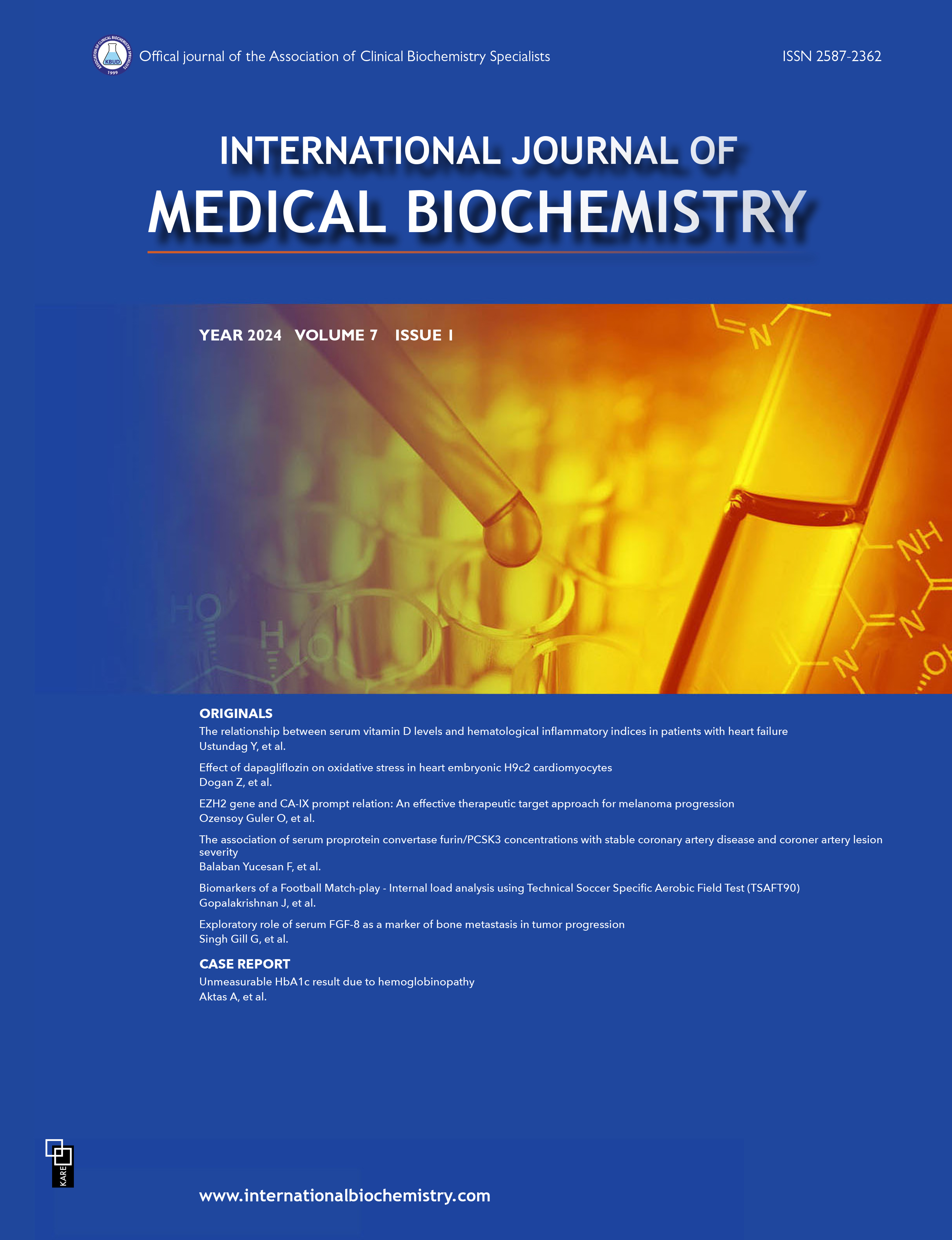Comparison of SST and RST tube biochemistry parameter results in emergency laboratory
Sebnem Tekin Neijmann1, Alev Kural1, Zeynep Levent Cirakli1, Asuman Gedikbasi1, Halil Dogan21Department of Clinical Biochemistry, Heath Science University, Bakirkoy Dr. Sadi Konuk Research And Training Hospital, Istanbul, Turkey2Department of Emergency Clinic, Heath Science University, Bakirkoy Dr. Sadi Konuk Research And Training Hospital, Istanbul, Turkey
INTRODUCTION: The goal of the hospital emergency laboratory is to provide quick and accurate test results. With the permission of emergency department patients who required laboratory test results, blood samples were collected in 2 different types of tubes: the standard serum separator tube (SST) and the rapid serum tube (RST) (SST Advance II and Vacutainer RST; Becton Dickinson and Co., Franklin Lakes, NJ, USA) and the results were compared.
METHODS: Blood samples were collected from 75 adult patients into RST and SST tubes via routine phlebotomy. Both tubes were centrifuged according the instructions for obtaining serum, and then each tube was tested for the level of alanine aminotransferase, alkaline phosphatase, amylase, aspartate aminotransferase, gamma-glutamyl transferase, lactate dehydrogenase, lipase, total creatinine kinase, creatinine kinase-muscle/brain enzyme, albumin, glucose, calcium, chloride, creatinine, potassium, sodium, total and direct bilirubin, total protein, and urea with an Abbott Architect c16000 (Abbot Diagnostics, Inc., Lake Forest, IL, USA) analyzer and biochemical methods. Statistical calculations were performed with the NCSS 2007 program for Windows (NCSS, LLC, Kaysville, UT, USA).
RESULTS: When compared with the SST tube sample results, the RST sample results were clinically equivalent or clinically acceptable. The results were evaluated within a 95% confidence interval. The level of statistical significance was established at p<0.05.
DISCUSSION AND CONCLUSION: RSTs do not require a waiting period for clotting, thereby decreasing the turn-around time by nearly 30 minutes. This can lead to increased laboratory efficiency and improved patient management in emergency departments.
Corresponding Author: Sebnem Tekin Neijmann, Türkiye
Manuscript Language: English



















